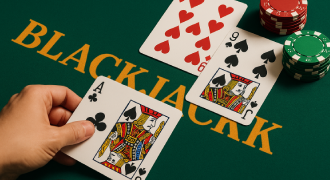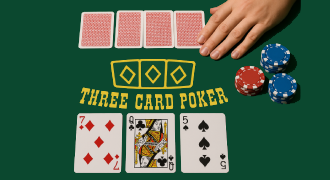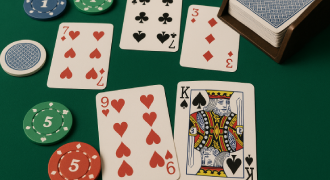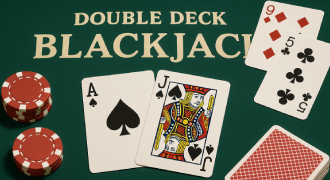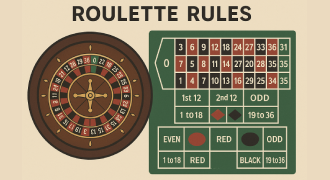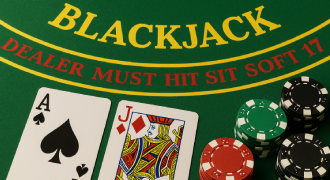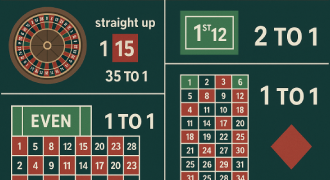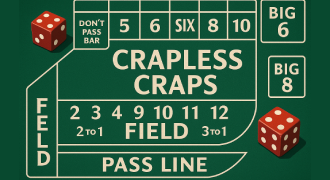Blackjack Games
Blackjack games has long been one of the most iconic and beloved casino games, combining simplicity with strategic depth. Today, thanks to online casinos, you can enjoy this timeless classic anytime, anywhere, without stepping into a physical venue. Whether you’re a seasoned card counter or a complete beginner, blackjack online games offers a range of exciting variations, flexible betting limits, and interactive features. With realistic graphics, live dealer options, and secure gameplay, it’s never been easier to experience the thrill of chasing 21 from the comfort of your home or on the go.
The Origins and Evolution of Blackjack
Blackjack casino games trace their roots to Eighteenth-Century France, where Vingt-Et-Un established the core value proposition: reach 21 without busting. The game professionalized in Nineteenth-Century America, where casinos ran a “Black Jack” promo that paid a bonus for a Black Jack of Spades with an Ace, which led to the modern name. Twentieth-Century Nevada standardized rules, payouts, and multi-deck shoes, enabling scalable house governance and predictable KPIs like house edge. The digital era operationalized browser gameplay, then layered live blackjack games for a near-table experience without physical friction.
Blackjack Games – Pros & Cons
| ✅ Pros | ❌ Cons |
|---|---|
| 🏆 Very low house edge (up to 99.6% RTP) 🎯 Simple rules, easy to learn 🧠 Strategic depth for skilled players 💬 Live dealer options for realistic play 💻 Available on desktop and mobile devices |
📉 Requires strategy to maximize wins 🎲 Still includes elements of luck |
Full Beginner’s Guide to Games Blackjack
Start by aligning on the goal: beat the dealer without exceeding 21 while controlling risk per hand. Select a table with limits that match your bankroll—treat table minimums as a budget constraint, not a dare. Read the rules pane: number of decks, whether the dealer hits soft 17 (H17) or stands (S17), and doubling/splitting permissions materially change expected value. When sampling best blackjack games, practice in demo mode to learn button flows, bet sizing, and side-bet mechanics before you commit capital.
Understanding Common Casino Abbreviations in Blackjack
Casinos use shorthand to compress rule sets; decode them before you deploy funds. H17 means the dealer hits a soft 17; S17 means the dealer stands—S17 usually trims the house edge. DAS authorizes Double After Split, DS means Double on any two cards, and RSA permits Re-Split Aces. SU or LS labels Late Surrender; ES flags Early Surrender, which is rare but player-friendly.
|
Abbrev. |
Meaning |
Player Impact |
|
H |
Hit |
Take another card; increases variance |
|
S |
Stand |
Hold total; reduces exposure |
|
D / DS |
Double (any two / specific) |
One extra card, bet doubles; high-leverage |
|
P / SP |
Split (any / pairs) |
Create two hands; increases upside and risk |
|
SU / LS |
Late Surrender |
Forfeit ½ bet to avoid negative EV spots |
|
ES |
Early Surrender |
Better than LS; rare, strong for players |
|
H17 |
Dealer hits soft 17 |
Slightly worse for players |
|
S17 |
Dealer stands soft 17 |
Slightly better for players |
|
DAS |
Double after split |
More flexibility; improves outcomes |
|
RSA |
Re-split Aces |
Additional upside in ace-heavy shoes |
Key Blackjack Terminology Explained
A Hard Hand has no Ace counted as 11; a Soft Hand contains an Ace valued at 11. Bust means a total over 21; Push is a tie where your stake returns. The Shoe holds multiple decks and the Cut Card marks the shuffle penetration; both shape card flow and frequency of high cards. A Natural (Ace + Ten-value) targets the flagship 3:2 payout in classic tables, while Side Bets like Perfect Pairs add optional, higher-variance exposure.
Why Games Blackjack Is Still a Player Favorite
Speed, transparency, and portability drive adoption: hands resolve fast, rules display clearly, and sessions travel with you across devices. Operators publish RTP ranges and table rules up front, letting you benchmark options like an analyst scanning a dashboard. Blackjack games online for money give social proof and real-time cadence while preserving the convenience of remote play. If you’re shopping for the best blackjack games, compare S17 availability, double rules, and payout schemas instead of just the lobby art.
Most-Played Blackjack Versions Online
The marketplace clusters around a handful of variants that balance tradition and engagement mechanics. European rules tighten risk by dealing the dealer’s second card after player actions, while Atlantic City rules expand flexibility with late surrender and DAS. Switch adds strategic recombination of two hands, and Surrender tables give disciplined players a graceful exit from negative EV. Perfect Payout and Live Dealer formats round out the portfolio with either optimized 3:2 structures or human-hosted execution.
|
Variant |
Decks |
Dealer on Soft 17 |
Double Rules |
Surrender |
Blackjacks Pay |
|
Atlantic City |
8 |
S17 |
Any two / DAS |
Late |
3:2 |
|
European |
2–6 |
Typically S17 |
9–11 or 10–11 |
Usually No |
3:2 |
|
Surrender (Late/Early) |
4–8 |
H17 or S17 |
Any two / DAS |
Yes |
3:2 |
|
Blackjack Switch |
6 |
H17 |
Any two |
No |
1:1 (switch) |
|
Live Dealer |
6–8 |
S17 common |
Any two / DAS |
Table-dependent |
3:2 |
|
Perfect Payout / Pairs Focus |
6–8 |
H17 or S17 |
Any two / DAS |
Varies |
3:2 (main) |
Blackjack Surrender Mode
Surrender blackjack games for fun Mode introduces a controlled exit: you forfeit half your stake to avoid high-risk scenarios like 16 vs Dealer 10. Late Surrender allows this after the dealer checks for a natural; Early Surrender happens before the check and is more favorable. Disciplined usage trims downside volatility and keeps bankroll runway healthy across longer sessions. Treat surrender as a compliance tool for risk limits, not as a default action.
Blackjack Switch Variant
In Switch, you receive two hands and can swap the top cards to optimize totals, which feels like portfolio rebalancing in real time. To offset this power, naturals typically pay 1:1 and dealer 22 often pushes, altering your risk-reward curve. The variant rewards situational awareness and rapid EV calculations across both hands. Practice with free play to internalize swap heuristics before you scale bet sizes.
Live Dealer Blackjack Games
Live blackjack games tables stream a human croupier and physical shoe, adding presence and trust to the digital flow. You still benefit from UI clarity, but the cadence mirrors a pit game with social chat and on-camera dealing. For players seeking real games like blackjack authenticity, live streams deliver the closest analogue without travel friction. Validate table rules in the info tile and ensure your connection supports smooth video before betting.
Atlantic City Blackjack Rules
Atlantic City Blackjack usually uses eight decks, dealer stands on soft 17, and late surrender plus DAS are in scope. The dealer peeks for a natural against A or Ten, which prevents unnecessary doubles or splits into a forced loss. These parameters keep the ruleset player-friendly while preserving operational simplicity. When evaluating top online blackjack games for real money AC rules are a reliable baseline for predictable outcomes.
European Style Blackjack
European Blackjack often deploys two to six decks and deals the dealer’s second card after your actions, changing double/split risk. Many tables allow doubling on 9–11 or 10–11 only, which demands tighter discipline on marginal totals. The absence of a dealer hole card means your doubles and splits carry more asymmetry against dealer naturals. In some EU-facing lobbies, you’ll even see the term best online blackjack games casino used informally in regional content.
Perfect Payout Blackjack
Perfect Payout keeps the core game traditional—aim for 3:2 on naturals—while spotlighting side bets like Perfect Pairs. The side bet tracks pair quality (Mixed, Colored, Perfect) with graduated returns that spike variance and excitement. Treat side bets as optional spice for entertainment, not as the main revenue engine for your bankroll. If your KPI is longevity, keep side-bet spend small relative to your primary stake.
How to Play Blackjack Games: Step-by-Step
Launch your first session like a pro: set a bankroll, choose a legit S17/DAS table with 3:2 payouts, and lock in a basic-strategy playbook to control variance. This step-by-step guide maps each decision gate—bet, deal, double, hit, stand, dealer resolve, outcome review—so your approach to play blackjack games online stays smooth, measurable, and repeatable.
- Step 1: Place your first bet
Set a fixed session budget and size your first wager at 1–2% of bankroll to protect runway. Confirm table min/max, payout for naturals, and whether insurance is offered before locking bets. Look for a legit blackjack games online for money table with clear rule disclosure, audit seals, and visible dealer rules. If the lobby offers chip presets, configure them to streamline your betting cadence.
- Step 2: Cards dealt to you and the dealer
You receive two digital cards; the dealer shows one upcard and typically holds a hidden hole card unless European rules apply. Log the dealer upcard category (2–6 weak, 7–Ace strong) to frame your decision tree. Classify your hand as hard or soft, because that changes hit/stand/double logic. Don’t rush—most UIs show tooltips or rule summaries you can leverage like an internal wiki.
- Step 3: Decide if you want to double down
Double when the math says your extra chip has positive expected value—classic triggers include 11 vs 2–10 and 10 vs 9 or less. Check the rules: some tables restrict doubles to 9–11 or disallow Double After Split. If you’re executing on mobile live blackjack games, confirm your swipe or tap inputs to avoid accidental stands. Remember that doubling commits you to one card, so calculate before you click.
- Step 4: Consider hitting for more cards
Hit to improve weak totals, especially hard 12–16 against dealer 7–Ace and soft hands where you can’t bust on the first draw. Use a basic strategy chart as your north star until the patterns become muscle memory. If latency spikes, pause before hitting to avoid double-taps that draw two cards. Treat each hit as a micro-experiment: new data arrives, and you re-run the decision.
- Step 5: Or stand with your current hand
Stand when your hand has reached the value plateau: pat 17–20 or soft 19+ in most rule sets. Against weak dealer upcards, conservative stands reduce variance and let the dealer over-extend. Standing also preserves doubles/splits equity from earlier in the hand by capping exposure. Make the call cleanly—UI confirmations help prevent misclicks that would erode ROI.
- Step 6: Dealer completes their hand
The blackjack games near me dealer reveals the hole card (except in European dealing until after your actions) and plays under H17/S17 constraints. Observe whether the table is configured for burn cards or shuffle triggers; these influence hand cadence. In live dealer rooms, the host will articulate outcomes, adding transparency to process. Your role is spectator here—decisions end, results resolve.
- Step 7: Outcome – win, lose, or push
If your total beats the dealer without busting, you win; naturals usually pay 3:2 unless the variant states otherwise. A push returns your stake; a loss burns it; a surrendered hand refunds half. Capture a quick post-hand read: was your line consistent with basic strategy given the rule set? Use that micro-retrospective to tighten decisions in subsequent rounds.
Try Free Blackjack Games First
Sandbox your strategy with free play to validate inputs before you deploy capital. Demo mode mirrors production rules while letting you iterate without risk, ideal for onboarding and variant testing. It also lets you pressure-test browser gameplay on your device and connection, ensuring smooth rendering and inputs. When you’re simply exploring blackjack games for fun, demo tables provide zero-stress reps that still build skill.
Real Money vs Free Blackjack — Which to Pick?
Free mode is for learning flows, benchmarking variants, and building decision discipline without downside. Real money mode is for executing a tested playbook with live stakes, measured bet sizing, and strict stop-losses. If you’re comparing lobbies for blackjack games for real money, verify S17, DAS, and 3:2 payouts before you choose a seat. For heavy hitters who value robust rule sets and fast payouts, shortlisting the best blackjack games real money offerings is a smart procurement exercise.
|
Dimension |
Free Mode (Demo) |
Real-Money Mode |
|
Risk |
None |
Capital at risk |
|
Use Case |
Learn rules, test variants |
Execute strategy, earn returns |
|
Emotion |
Low pressure |
Higher pressure; requires discipline |
|
Selection |
Broad access |
Jurisdiction-dependent |
Five Key Tactics for Games Blackjack Wins
- Play S17, DAS Tables: Favor S17 and Double After Split; these micro-edges compound over long sessions.
- Use the Surrender Lever: Late Surrender on hands like 16 vs 10 reduces losses and increases bankroll longevity.
- Follow Basic Strategy: Print or memorize a chart; don’t deviate based on hunches or recent variance.
- Size Bets Responsibly: Keep bets flat or use tiny steps; avoid Martingale and protect drawdown limits.
- Side Bets Sparingly: Treat Perfect Pairs and similar as entertainment, not core profit centers.
Wrapping Up: Final Thoughts on Blackjack
This isn’t about luck theater; it’s about disciplined execution on transparent rules. Calibrate your table selection, apply the strategy playbook, and respect bankroll guardrails to sustain your edge. If you’re curating a shortlist of the best Blackjack Games real money candidates, prioritize rule quality over flashy lobbies. With repeatable habits, a clear head, and steady pacing across online tables, your performance will trend toward solid, analytics-backed outcomes.
FAQ
How does Games Blackjack work exactly?
The platform deals digital cards (or streams a live dealer), enforces published rules, and resolves outcomes automatically. You place chips, make decisions, and the system handles payouts.
What are the must-know rules before playing?
Know decks used, S17 vs H17, double and split permissions, surrender availability, and payout for a natural. These inputs define house edge and your strategy.
How do I use a basic Blackjack strategy properly?
Use a chart tailored to the table’s exact rules and follow it without improvising. Over time you’ll internalize the decisions and move faster.
Should I always split or double down in Blackjack?
No—split and double only in chart-approved spots tied to dealer upcards and your totals. Random aggression increases variance without upside.
Is taking insurance worth it in Games Blackjack?
Generally no; insurance has negative expected value unless you’re card counting. Save chips for +EV doubles and splits.
What betting options do I have in Blackjack?
Core bets include the main hand, doubles, splits, and surrender where available. Side bets like Perfect Pairs are optional and high variance.

